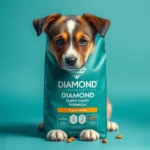
Introduction
Proper nutrition is vital for maintaining the health and well-being of dogs. Just like humans, dogs require a balanced diet to thrive, and the right food can significantly impact their energy levels, coat condition, and overall health. Among the various types of dog food available, soft dry dog foods have gained popularity, particularly for their unique texture and nutritional benefits. These foods provide a middle ground between traditional dry kibble and wet food, making them an excellent choice for many dogs.
In this article, we will delve into the importance of dog nutrition, explore what soft dry dog foods are, discuss how to choose the best options, and provide recommendations for top brands. We will also address common questions about transitioning to soft dry dog foods and provide tips for a successful switch.
Understanding Dog Nutrition
Basic Nutritional Needs of Dogs
To provide the best care for dogs, it’s essential to understand their basic nutritional needs. Dogs require three primary macronutrients:
- Proteins: Vital for growth, maintenance, and repair of tissues. Proteins are made up of amino acids, which are crucial for muscle development and overall health.
- Fats: Provide a concentrated energy source and are essential for healthy skin and coat. Omega fatty acids, in particular, play a significant role in reducing inflammation and supporting cognitive function.
- Carbohydrates: While not strictly essential, carbohydrates provide energy and can help with digestion. They also serve as a source of fiber, which is important for gastrointestinal health.
In addition to macronutrients, dogs require a variety of vitamins and minerals for optimal functioning. Vitamins such as A, D, E, and B-complex are important for various bodily functions, including immune response and energy metabolism. Minerals like calcium and phosphorus are crucial for bone health.
Water is another critical component of a dog’s diet. It aids in digestion, nutrient absorption, and temperature regulation. Always ensure that your dog has access to fresh, clean water.
Life Stages and Nutritional Requirements
Nutritional needs vary significantly throughout a dog’s life. Understanding these differences is crucial for providing the right diet.
-
Nutrition for Puppies: Puppies require a diet rich in proteins and fats to support their rapid growth and development. Their food should be formulated to meet higher energy needs.
-
Nutrition for Adult Dogs: Adult dogs need a balanced diet that maintains their health without leading to obesity. The focus should be on maintaining muscle mass and overall vitality.
-
Nutrition for Senior Dogs: As dogs age, their metabolism slows down, and they may require fewer calories. Senior dog foods are often lower in fat but higher in fiber to support digestion and maintain a healthy weight.
Common Nutritional Myths
There are numerous myths surrounding dog nutrition that can lead to confusion. For instance, some believe that dogs should eat a grain-free diet, while others think that raw food is the best option. It’s essential to base dietary decisions on scientific evidence and consult with veterinarians, who can provide tailored advice based on a dog’s specific needs.
What Are Soft Dry Dog Foods?
Definition and Composition
Soft dry dog foods are a hybrid between traditional dry kibble and wet food. They have a softer texture, making them easier for dogs to chew and digest. These foods usually contain a balance of high-quality proteins, fats, and carbohydrates, along with essential vitamins and minerals. The primary difference between soft dry foods and traditional dry foods lies in their moisture content and texture.
Benefits of Soft Dry Dog Foods
There are several advantages to feeding dogs soft dry dog foods:
-
Easier Chewing and Digestion: The softer texture makes it easier for older dogs or those with dental issues to chew, reducing the risk of choking and promoting better digestion.
-
Enhanced Palatability: Many dogs are picky eaters, and the appealing flavor of soft dry foods can entice them to eat, ensuring they receive the nutrition they need.
-
Nutritional Balance and Convenience: Soft dry foods provide a complete and balanced diet, often requiring no additional supplements. They are also easy to store and serve.
Criteria for Choosing the Best Soft Dry Dog Foods
Ingredient Quality
When selecting soft dry dog foods, the quality of ingredients is paramount. Look for high-quality protein sources as the first ingredient, such as chicken, beef, or fish. Avoid foods that contain fillers like corn, soy, or artificial additives, which can detract from overall nutrition.
Nutritional Balance
Understanding the Association of American Feed Control Officials (AAFCO) guidelines is crucial when evaluating dog foods. AAFCO establishes standards for pet food labeling and nutritional adequacy. Ensure that the soft dry food you choose meets these guidelines for your dog’s specific life stage.
Life Stage Considerations
Tailoring food selection based on a dog’s age and health needs is essential. For example, puppies require more calories and nutrients for growth, while senior dogs might need a diet lower in calories but higher in fiber. Additionally, if your dog has allergies or sensitivities, it’s vital to choose a soft dry food that caters to those unique needs.
Top Recommendations for Best Soft Dry Dog Foods
Review of Top Brands
When searching for the best soft dry dog foods, consider the following brands, known for their quality ingredients and balanced nutrition:
-
Brand A: This brand offers a soft dry dog food made with real meat as the first ingredient, along with wholesome grains and vegetables. It’s rich in omega fatty acids for healthy skin and coat and free from artificial preservatives.
-
Brand B: Known for its holistic approach, this brand focuses on superfoods and natural ingredients. Their soft dry food includes a blend of protein sources and is enhanced with probiotics for digestive health.
-
Brand C: This brand specializes in soft dry foods for senior dogs, emphasizing lower calories and higher fiber content. It includes joint-supporting ingredients like glucosamine and chondroitin.
Comparison Table
| Brand | Key Features | Ingredients Highlights | Unique Selling Points |
|---|---|---|---|
| Brand A | High protein, omega fatty acids | Real chicken, brown rice, carrots | All-natural, no artificial preservatives |
| Brand B | Holistic, includes probiotics | Salmon, quinoa, blueberries | Focus on superfoods and digestive health |
| Brand C | Senior-specific, joint support | Chicken meal, sweet potatoes, peas | Tailored for senior dogs’ nutritional needs |
Tips for Transitioning Your Dog to Soft Dry Dog Foods
Gradual Introduction
When transitioning your dog to a new food, it’s important to do so gradually. Start by mixing a small amount of the soft dry food with your dog’s current food. Over the course of 7 to 10 days, gradually increase the proportion of the soft dry food while decreasing the old food. This gradual introduction helps prevent digestive upset.
Monitoring Your Dog’s Health
As you transition, observe your dog for any signs of digestive adjustments, such as changes in stool consistency, appetite, or behavior. Most dogs adapt well, but if you notice any persistent issues, consult your veterinarian for guidance.
Frequently Asked Questions (FAQs)
Are soft dry dog foods suitable for all dogs?
Yes, soft dry dog foods are suitable for most dogs, including those with dental issues or older dogs that may struggle with hard kibble. However, always consult with a veterinarian to ensure the food meets your dog’s specific needs.
Can I mix soft dry dog food with wet food?
Mixing soft dry dog food with wet food can be beneficial, especially for picky eaters. This combination can enhance palatability while providing a balanced diet.
How do I store soft dry dog food properly?
Store soft dry dog food in a cool, dry place, preferably in an airtight container to maintain freshness. Avoid exposure to moisture and direct sunlight, which can degrade the food quality.
What should I do if my dog refuses to eat soft dry dog food?
If your dog refuses to eat soft dry dog food, don’t panic. Try adding a small amount of warm water or low-sodium broth to enhance the aroma and flavor. If the refusal continues, consider consulting your veterinarian for alternative recommendations.
Conclusion
Understanding proper dog nutrition is crucial for responsible pet ownership. Choosing the best soft dry dog foods can make a significant difference in your dog’s health and happiness. By focusing on high-quality ingredients, nutritional balance, and life-stage considerations, you can provide your furry friend with a diet that meets their needs. Always remember to consult with a veterinarian for personalized advice tailored to your dog’s specific requirements, ensuring they lead a long, healthy, and happy life.









